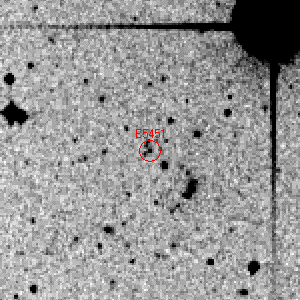(145451) 2005 RM43 on:
[Wikipedia]
[Google]
[Amazon]
, provisionally known as , is a
 is considered likely to be a dwarf planet by both
is considered likely to be a dwarf planet by both
(145451) 2005 RM43 Precovery Images
* {{DEFAULTSORT:145451 Scattered disc and detached objects 2005 RM43 2005 RM43 2005 RM43 Possible dwarf planets Objects observed by stellar occultation 20050909
trans-Neptunian object
A trans-Neptunian object (TNO), also written transneptunian object, is any minor planet in the Solar System that orbits the Sun at a greater average distance than Neptune, which has a semi-major axis of 30.1 astronomical units (au).
Typically ...
that resides in the scattered disc
The scattered disc (or scattered disk) is a distant circumstellar disc in the Solar System that is sparsely populated by icy small solar system bodies, which are a subset of the broader family of trans-Neptunian objects. The scattered-disc obje ...
region beyond the Kuiper belt
The Kuiper belt () is a circumstellar disc in the outer Solar System, extending from the orbit of Neptune at 30 astronomical units (AU) to approximately 50 AU from the Sun. It is similar to the asteroid belt, but is far larger—20 tim ...
. It was discovered on 9 September 2005, by American astronomers Andrew Becker, Andrew Puckett and Jeremy Kubica at Apache Point Observatory
The Apache Point Observatory (APO; obs. code: 705) is an astronomical observatory located in the Sacramento Mountains in Sunspot, New Mexico, United States, approximately south of Cloudcroft. The observatory is operated by New Mexico State Un ...
in Sunspot, New Mexico. It measures approximately 500–600 kilometers in diameter.
Description
 is considered likely to be a dwarf planet by both
is considered likely to be a dwarf planet by both Brown
Brown is a color. It can be considered a composite color, but it is mainly a darker shade of orange. In the CMYK color model used in printing or painting, brown is usually made by combining the colors orange and black. In the RGB color model ...
and Tancredi. Based on an absolute magnitude
Absolute magnitude () is a measure of the luminosity of a celestial object on an inverse logarithmic astronomical magnitude scale. An object's absolute magnitude is defined to be equal to the apparent magnitude that the object would have if it ...
of 4.4, the body's diameter could be anywhere in the range of 350 to 800 kilometres (km), depending on its albedo
Albedo (; ) is the measure of the diffuse reflection of solar radiation out of the total solar radiation and measured on a scale from 0, corresponding to a black body that absorbs all incident radiation, to 1, corresponding to a body that refle ...
, the surface reflectivity of the object. Johnston's Archive gives an estimate of 584 km, based on an assumed albedo of 0.09. Brown estimates a diameter of 524 km, based on an absolute magnitude of 4.8 and an assumed albedo of 0.08. A stellar occultation
Stellar means anything related to one or more stars (''stella''). The term may also refer to:
Arts, entertainment, and media
* ''Stellar'' (magazine), an Irish lifestyle and fashion magazine
* Stellar Loussier, a character from ''Mobile Suit Gu ...
by in December 2018 gave a minimum diameter of 458 km.
In 2018, two stellar occultation
Stellar means anything related to one or more stars (''stella''). The term may also refer to:
Arts, entertainment, and media
* ''Stellar'' (magazine), an Irish lifestyle and fashion magazine
* Stellar Loussier, a character from ''Mobile Suit Gu ...
s by were observed on 3 February and 24 December. Observations of the February occultation yielded a single chord length of . Observations of the December occultation yielded two positive chords, which suggest an approximate diameter of for .
It has been observed 303 times over 17 oppositions
''Oppositions'' was an architectural journal produced by the Institute for Architecture and Urban Studies from 1973 to 1984. Many of its articles contributed to advancing architectural theory and many of its contributors became distinguished practi ...
, with precovery
In astronomy, precovery (short for pre-discovery recovery) is the process of finding the image of an object in images or photographic plates predating its discovery, typically for the purpose of calculating a more accurate orbit. This happens mos ...
images dating back to 1976. The orbit is well determined with an uncertainty parameter
The uncertainty parameter ''U'' is introduced by the Minor Planet Center (MPC) to quantify the uncertainty of a perturbed orbital solution for a minor planet. The parameter is a logarithmic scale from 0 to 9 that measures the anticipated longit ...
of 2.
See also
* * * *References
External links
(145451) 2005 RM43 Precovery Images
* {{DEFAULTSORT:145451 Scattered disc and detached objects 2005 RM43 2005 RM43 2005 RM43 Possible dwarf planets Objects observed by stellar occultation 20050909